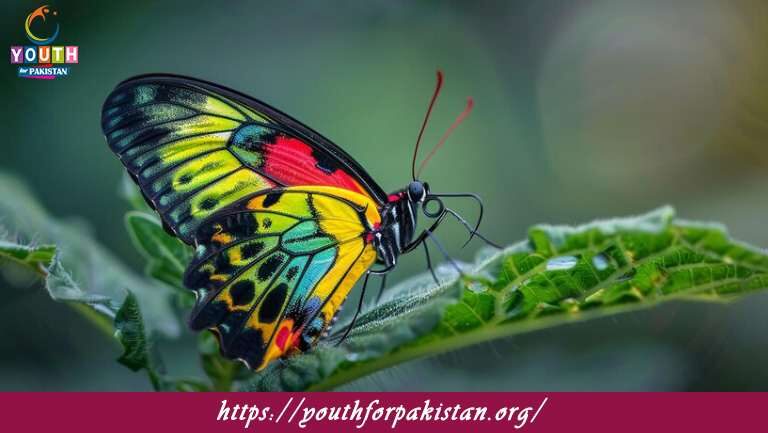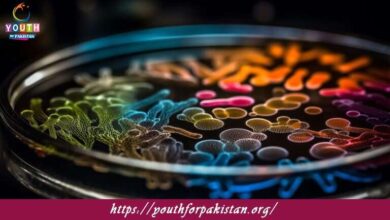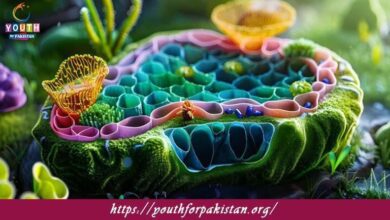9th Class Biology Chapter 3 MCQs with Answers

Get ready to enjoy nature with the questions relating to “Biodiversity MCQs,” one of the major subjects for 9th-class biology students. This chapter covers the classification of organisms, importance of biodiversity, and strategies to conserve biodiversity. Take a test on species, ecosystems, and threats to biodiversity with these interesting MCQs that help in exam preparation and clarity of concepts.
Biodiversity refers to the:
a) Number of species in an ecosystem
b) Variety of life forms on Earth
c) Genetic variation within a species
d) All of the above
Which of the following is the main threat to biodiversity?
a) Pollution
b) Habitat loss
c) Climate change
d) Overhunting
Which of the following is an example of an ecosystem with high biodiversity?
a) A desert
b) A rainforest
c) A tundra
d) A grassland
What is the term used to describe the variety of different species within a given area?
a) Ecosystem diversity
b) Genetic diversity
c) Species diversity
d) Habitat diversity
The process by which new species arise from existing species is called:
a) Speciation
b) Evolution
c) Extinction
d) Hybridization
Which of the following is an example of an invasive species?
a) A native bird species in its natural habitat
b) A plant species introduced from another country that outcompetes native plants
c) A rare species protected in a nature reserve
d) A keystone species that regulates the ecosystem
Which of the following is the primary cause of the current mass extinction event?
a) Volcanic eruptions
b) Asteroid impact
c) Human activities
d) Climate change
Which of the following is an example of a keystone species?
a) A predator that controls the population of herbivores
b) A plant species that provides food for many animals
c) A species that is dominant in an ecosystem
d) A rare species that has a significant cultural value
Which of the following is a measure of the number of individuals of a species in a given area?
a) Species richness
b) Population density
c) Genetic diversity
d) Endemism
What is the term used to describe species that are native to a specific region and found nowhere else?
a) Invasive species
b) Endemic species
c) Keystone species
d) Indicator species
Which of the following is a measure of the variety of ecosystems within a geographic area?
a) Genetic diversity
b) Species diversity
c) Ecosystem diversity
d) Habitat diversity
The loss of biodiversity can result in:
a) Increased ecosystem stability
b) Improved ecosystem resilience
c) Reduced ecosystem services
d) Higher species adaptability
Which of the following is a legal and protected area where species and their habitats are preserved?
a) Zoo
b) Nature reserve
c) Farm
d) Factory
Which of the following is a characteristic of a sustainable ecosystem?
a) High levels of pollution
b) Rapid loss of species
c) Stable population sizes
d) Overexploitation of resources
Which of the following is an example of an endangered species?
a) Common house mouse
b) Bald eagle
c) Domestic cat
d) Honeybee
The process by which two or more species evolve in response to each other over time is called:
a) Coevolution
b) Hybridization
c) Extinction
d) Mutation
The Convention on Biological Diversity (CBD) is an international treaty aimed at:
a) Promoting genetic engineering
b) Protecting biodiversity
c) Encouraging habitat destruction
d) Legalizing hunting of endangered species
Which of the following is a direct value of biodiversity to humans?
a) Aesthetic and recreational value
b) Regulation of climate
c) Prevention of soil erosion
d) All of the above
The variety of different ecosystems on Earth is known as:
a) Genetic diversity
b) Species diversity
c) Ecosystem diversity
d) Biotic diversity
Which of the following is an example of an ex situ conservation method?
a) Creating national parks
b) Establishing wildlife sanctuaries
c) Breeding endangered species in captivity
d) Implementing fishing regulations
Which of the following is an example of a critically endangered species?
a) Common squirrel
b) Giant panda
c) European robin
d) African elephant
The loss of a keystone species in an ecosystem can result in:
a) Increased biodiversity
b) Decreased competition among species
c) Disruption of the entire ecosystem
d) Faster adaptation of other species
Which of the following is an example of an anthropogenic factor contributing to the loss of biodiversity?
a) Volcanic eruption
b) Earthquake
c) Deforestation
d) Tsunami
The process by which some species reproduce and produce fertile offspring is called:
a) Hybridization
b) Extinction
c) Inbreeding
d) Speciation
Which of the following is a measure of the variety of genes within a species?
a) Genetic diversity
b) Species diversity
c) Ecosystem diversity
d) Habitat diversity
Which of the following is an example of a genetic resource?
a) A rare species in a nature reserve
b) A diverse ecosystem in a national park
c) A gene that gives resistance to a specific disease
d) A community of organisms in a forest
Which of the following is a measure of the number of different species in a given area?
a) Genetic diversity
b) Species richness
c) Ecosystem diversity
d) Population density
Which of the following is an example of a biotic factor that affects biodiversity?
a) Climate change
b) Habitat destruction
c) Overhunting
d) Earthquake
Which of the following is a measure of the variety of habitats within a geographic area?
a) Genetic diversity
b) Species diversity
c) Ecosystem diversity
d) Habitat diversity
Which of the following is an example of a threatened species?
a) African lion
b) Red fox
c) Grey wolf
d) Cheetah
The process by which a species becomes extinct in a specific geographic area but survives elsewhere is called:
a) Speciation
b) Endemism
c) Extinction
d) Hybridization
Which of the following is an example of an extinction event in Earth’s history?
a) The rise of Homo sapiens
b) The formation of the Grand Canyon
c) The extinction of dinosaurs
d) The discovery of penicillin
Which of the following is a method of in situ conservation?
a) Establishing botanical gardens
b) Captive breeding of endangered species
c) Creating wildlife reserves
d) Reintroducing species into their natural habitat
What is the term used to describe the variety of different life forms on Earth?
a) Species diversity
b) Genetic diversity
c) Biodiversity
d) Ecosystem diversity
The Red List, compiled by the International Union for Conservation of Nature (IUCN), assesses the:
a) Genetic diversity of endangered species
b) Population density of different species
c) Conservation status of species
d) Number of ecosystems in a region
Which of the following is a measure of the variety of life within an ecosystem?
a) Genetic diversity
b) Species diversity
c) Ecosystem diversity
d) Habitat diversity
Which of the following is an example of an endemic species?
a) Brown bear
b) Bengal tiger
c) Giant panda
d) Komodo dragon
Which of the following is an example of an ecosystem service provided by biodiversity?
a) Absorption of greenhouse gases
b) Destruction of natural habitats
c) Overexploitation of resources
d) Invasive species introduction
The loss of biodiversity can lead to a reduction in the resilience of ecosystems, making them:
a) More vulnerable to change
b) More adaptable to change
c) Less susceptible to pollution
d) Less affected by climate change
Which of the following is an example of a genetic resource?
a) A rainforest ecosystem
b) A rare species in a nature reserve
c) A gene that gives resistance to a specific disease
d) A community of organisms in a grassland
Which of the following is an example of a hotspot of biodiversity?
a) An area with a high number of invasive species
b) An area with a low number of endemic species
c) An area with a high number of threatened species
d) An area with a low number of ecosystem types
The decline of a keystone species can lead to:
a) Increased biodiversity
b) Improved ecosystem stability
c) Disruption of the entire ecosystem
d) Slower adaptation of other species
Which of the following is an example of a species that has a high cultural value but is not endangered?
a) African elephant
b) Red fox
c) Bald eagle
d) Snow leopard
The conservation status of a species is determined based on its:
a) Population density
b) Genetic diversity
c) Extinction risk
d) Habitat diversity
Which of the following is a measure of the variety of ecosystems within a specific region?
a) Genetic diversity
b) Species diversity
c) Ecosystem diversity
d) Biotic diversity
Which of the following is an example of an in situ conservation method?
a) Establishing botanical gardens
b) Captive breeding of endangered species
c) Creating wildlife reserves
d) Reintroducing species into their natural habitat
The variety of different ecosystems, species, and genes within a specific region is called:
a) Species richness
b) Genetic diversity
c) Biodiversity
d) Endemism
Which of the following is an example of a critically endangered species?
a) Polar bear
b) Black bear
c) Snow leopard
d) California condor
Which of the following is a direct value of biodiversity to humans?
a) Regulation of climate
b) Habitat destruction
c) Prevention of soil erosion
d) Rapid loss of species
The Convention on International Trade in Endangered Species of Wild Fauna and Flora
(CITES) aims to:
a) Promote genetic engineering
b) Protect biodiversity
c) Encourage habitat destruction
d) Legalize hunting of endangered species
Which of the following is a measure of the variety of genes within a specific species?
a) Genetic diversity
b) Species diversity
c) Ecosystem diversity
d) Habitat diversity
Which of the following is an example of an extinction event caused by human activities?
a) The formation of the Grand Canyon
b) The extinction of dinosaurs
c) The rise of Homo sapiens
d) The discovery of penicillin
The variety of different species within a specific area is known as:
a) Genetic diversity
b) Species diversity
c) Biodiversity
d) Ecosystem diversity
Which of the following is an example of a threatened species?
a) Giant panda
b) Common squirrel
c) African lion
d) Red fox
The loss of biodiversity can lead to a reduction in the stability of ecosystems, making them:
a) More vulnerable to change
b) More adaptable to change
c) Less affected by pollution
d) Less resilient to climate change
Which of the following is a measure of the number of different species in a specific area?
a) Genetic diversity
b) Species richness
c) Ecosystem diversity
d) Population density
The process by which species disappear from Earth is called:
a) Extinction
b) Speciation
c) Endemism
d) Hybridization
Which of the following is an example of an endemic species?
a) Bengal tiger
b) Brown bear
c) Giant panda
d) Komodo dragon
The variety of different life forms on Earth is known as:
a) Species diversity
b) Genetic diversity
c) Biodiversity
d) Ecosystem diversity
Which of the following is a measure of the variety of different ecosystems within a specific region?
a) Genetic diversity
b) Species diversity
c) Ecosystem diversity
d) Biotic diversity
9th Class Biology Chapter 3 Flashcards
[button color=”primary” size=”small” link=”https://youthforpakistan.org/online-test/9th-class-Biology-chapter-3-test/” icon=”” target=”true” nofollow=”false” sponsored=”false”]Start Chapter 3 Test[/button]
If you are interested to enhance your knowledge regarding Physics, Chemistry, Biology, and Computer please click on the link of each category, you will be redirected to dedicated website for each category.





